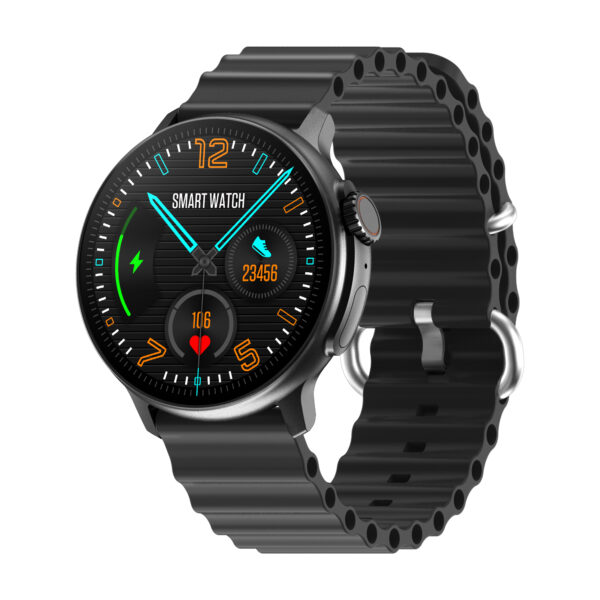2024-07-27
AMOLED screens are increasingly being used in smartwatches due to their numerous advantages. These screens utilize Active Matrix Organic Light-Emitting Diodes (AMOLED) technology, which offers several benefits:
Advantages:
Vivid and Sharp Display: AMOLED screens provide vibrant colors and deep blacks, resulting in excellent image quality. This is especially important for smartwatches, where the display is small, and every pixel counts.
Power Efficiency: Each pixel in an AMOLED display emits its own light and can be turned on or off individually. This allows for energy-efficient operation by displaying only the necessary content, ultimately extending the smartwatch’s battery life.
Thin and Lightweight: AMOLED screens are thin and lightweight, making them suitable for compact devices like smartwatches where space and weight are critical considerations.
Flexible Displays: Some AMOLED displays are flexible, enabling manufacturers to create unique and curved designs for smartwatches. This flexibility can enhance aesthetics and ergonomics.
Always-On Display: AMOLED screens can support always-on display features, where essential information is continuously visible in a low-power mode. This is a valuable feature for smartwatches, ensuring users can quickly check the time or notifications without fully activating the display.
Despite these advantages, AMOLED screens also have some drawbacks:
Disadvantages:
Susceptibility to Burn-In: Over time, AMOLED screens can experience burn-in issues, where static elements, such as the clock or icons, can leave permanent impressions on the screen.
Cost: AMOLED technology can be more expensive to manufacture than other screen technologies, potentially driving up the cost of smartwatches.
Limited Outdoor Visibility: AMOLED screens may struggle with visibility in bright outdoor conditions, as their contrast levels can make it challenging to see the display in direct sunlight.
Future Trends:
Looking ahead, the future of AMOLED screens in smartwatches appears promising:
Improved Durability: Manufacturers are working on enhancing the durability of AMOLED screens to mitigate issues like burn-in. This may involve new materials or technologies.
Enhanced Energy Efficiency: Ongoing research and development efforts aim to make AMOLED screens even more power-efficient, further extending the battery life of smartwatches.
Innovative Form Factors: Flexible AMOLED displays will likely continue to be a focal point, enabling innovative and unconventional smartwatch designs.
Enhanced Outdoor Visibility: Future AMOLED screens may incorporate technologies to improve outdoor visibility, ensuring users can comfortably use their smartwatches in various lighting conditions.
In summary, AMOLED screens offer excellent display quality, energy efficiency, and design flexibility, making them a compelling choice for smartwatches. However, addressing issues like burn-in and cost, while improving outdoor visibility and durability, will be critical in shaping their continued adoption and development in the smartwatch industry.







